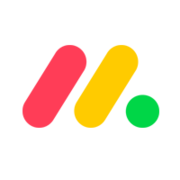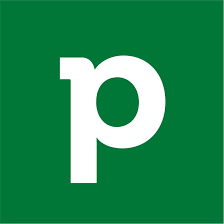- Landing Page vs. Website: Overview
- What is a Landing Page?
- Landing Page Examples
- Pros and Cons of Landing Pages
- What is a Website?
- Examples of Websites
- Pros and Cons of Websites
- Key Elements That Differentiate Landing Page and a Website
- Create a Professional Website and a Landing Page with the Right Software
Landing Page vs. Website with 10 Examples


Table of Contents
- Landing Page vs. Website: Overview
- What is a Landing Page?
- Landing Page Examples
- Pros and Cons of Landing Pages
- What is a Website?
- Examples of Websites
- Pros and Cons of Websites
- Key Elements That Differentiate Landing Page and a Website
- Create a Professional Website and a Landing Page with the Right Software
As the debate around websites vs. landing pages heats up, many are left questioning the necessity of one over the other. Does having a website negate the need for a landing page? Can a website serve the same purpose as a landing page? What truly distinguishes these two digital entities, and when should you opt for one over the other?
Findstack’s experts weigh in on these pressing questions, offering examples to help you determine whether a landing page or a website best suits your needs.
Landing Page vs. Website: Overview
The distinction between landing pages vs. websites lies in their varying compositions and objectives.
A website offers a more comprehensive digital presence. It’s made up of multiple web pages, landing pages, or sections, each shedding light on various aspects of your business.
A landing page, on the other hand, is a standalone web page designed to prompt users to take a specific action, such as signing up for a newsletter or downloading an eBook.
Think of a website as a library that houses various books and resources, each covering different topics related to your business. Visitors can explore the library to gain a broad understanding of your offerings.
In contrast, a landing page is akin to a single brochure or flyer, focusing on a specific topic or promotion. It is designed to encourage readers to take one targeted action.
This distinction highlights the key differences in purpose, structure, content, traffic sources, and target audiences between websites and landing pages.
What is a Landing Page?
As mentioned earlier, a landing page represents an independent web page meticulously crafted to accomplish a specific objective. Goals may range from generating leads and acquiring webinar attendees to boosting product sales. Users typically arrive at the landing page via online advertisements, social media campaigns, or links embedded in emails and newsletters.
This targeted approach ensures that landing pages remain focused on their primary purpose, which is to guide visitors toward a single desired action. By eliminating distractions and focusing on the intended outcome, landing pages can effectively increase conversion rates and contribute to the success of marketing campaigns.
Take a look at these essential landing page features:
- It has a single goal: The purpose of a landing page is to double conversions by crafting a persuasive call to action (CTA). More examples of CTAs include “download now,” “buy now,” “subscribe today,” “claim your offer,” “donate and make a difference,” and more. To be effective, the landing page must have one CTA.
- It omits many of the elements of a website: It doesn’t have an “About Us” page and may exclude a navigation menu to ensure there are no distractions.
- It might be a standalone website. This type of website has several pages directing visitors to one crystal-clear CTA.
- It undergoes A/B testing: A landing page performs multiple tests to get the best conversion optimization results. You want to ensure you obtain high conversion rates.
Landing Page Examples
Need some inspiration to get started with landing pages? Here are a few great examples of landing pages:
Veed.io’s SEO landing page targets “video editor.”

Veed.io is an app that helps users with little editing skills edit videos.
Why this landing page works:
- Heading spells out the value proposition clearly: “Free online video editor-easy to use”
- Two call-to-action buttons that give the visitor two options: to edit a video or to sign up
CleanVoice’s commercial landing page

CleanVoice is software that helps podcasters polish up their recordings.
Why this landing page works:
- The minimalist text explains what the app does
- Visible CTA button
- The message resonates with the audience
Atlassian’s – direct comparison landing page

Atlassian is an app for software developers.
Why this landing page works:
- The title is concise and shows the reader what they’ll learn
- One paragraph that explains how Jira Software works
HubSpot’s – lead capture landing page

HubSpot is a popular brand that offers CRM software.
Why this landing page works:
- The text explains how HubSpot conducted its report, giving it credibility
- Photo of the eBook and an appropriate CTA to capture leads
Dropbox’s – click-through landing page
Dropbox helps users organize and keep their resources by offering cloud storage
Why this landing page works:
- Plenty of blue space to draw the visitor’s attention
- Strong value proposition “ Work better, safer, together”
- Note the rhyme in the above copy
- Two CTAs, one encourages the audience to register for an account and the other to buy
If you want to create your own attention-grabbing landing page and maximize conversion rates, be sure to browse through our extensive list of available software today.

Pros and Cons of Landing Pages
Pros
- Tailor-made messaging: The beauty of landing pages is they let you speak the language that resonates with your potential customers.
- Effortless to track: They make it a breeze to track vital marketing metrics, such as traffic going to your web pages, where visitors go after landing on each page, how long they stay, and what actions
- Easy to A/B test: You can tweak landing pages multiple times to get the best conversion rates, like messaging, CTA buttons, layout, color palette, media, visuals, etc.
Cons
- No client segmentation: Landing pages don’t let you segment your customers based on their interests and behaviors.
- Expensive ad spend to get traffic: Landing pages that aim to capture leads might lead to poor returns on ad spend if they fail to generate traffic and convert it into leads
What is a Website?
A website represents an interconnected network of web pages unified by a single domain name, like Findstack.com. It serves as a platform for presenting content about you, your brand, or any topic pertinent to your target audience. Consider your website the central hub of your digital marketing initiatives, playing a crucial role in establishing connections with your followers.
To make the most of your website, pay attention to these essential elements below:
- It must represent your brand
- It should provide detailed information about your products or services
- It must be mobile-friendly, responsive, and easy to navigate
- Its content must be captivating, scannable, and highly engaging
Examples of Websites
Findstack

Findstack is a B2B software marketplace with easy-to-understand software reviews.
Why this homepage works:
- The search bar lets users find the software comparisons faster
- The drop-down menu makes it easy for the user to navigate the website
- Brand colors contrast well
PodBean

Podbean allows users to host and monetize podcasts.
Why this homepage works:
- An uncluttered homepage reduces distractions
- Suitable CTAs for existing and new customers
- Brand voice reinforced with good contrasting colors
Airtable

Airtable is project management software.
Why this landing page works:
- Good copy: “Connect everything. Achieve anything”
- Easy to navigate with a drop-down menu
Monday.com

Monday.com is a well-known communication and project management tool for teams.
Why this homepage works:
- Icons explain what the app does
- Bold colors emphasize Monday.com’s strengths
- User-friendly layout
Webflow

Webflow is for website designers.
Why this homepage works:
- Three CTAs at the top right-hand corner catering to different users
- The black space contrasts well with the white text
- Easy to navigate
Pros and Cons of Websites
Pros
- Ease of communication: Websites let you communicate with your customers and online visitors via chatbots, SMS, video conferencing, etc.
- Ideal marketing platform: You can display and sell your e-commerce products, run marketing campaigns, generate leads, educate your audience, etc.
- Centralized source of information: You can centralize information about your business by using a website, such as details about your history, products, services, location, contact details, etc.
Cons
-
Costly: Creating a website has several costs, including:
- Web design, domain registration, and renewal
- Maintenance costs and plugins
- Requires active engagement: Keep your website’s content fresh to maintain high engagement levels by updating and uploading new insights.
Key Elements That Differentiate Landing Page and a Website
As we continue to examine the elements that set landing pages vs websites apart, let’s take a look at the nuances of both platforms so you can make an informed decision on which one best aligns with your online objectives.
Structure
In terms of architecture, a website typically consists of a homepage and numerous interlinked pages, all easily navigable thanks to a well-organized menu.
Take Findstack’s website, for instance: it features a search bar, a pair of web pages with user-friendly drop-down menus, and even dedicated sections for exclusive deals and business listings.

By contrast, a landing page is a more streamlined and focused entity, often designed for a specific purpose, such as promoting sales, garnering subscriptions, or expressing gratitude. If you aim to offer users an in-depth look at your brand, a website is your best bet; however, a standalone landing page can efficiently guide users towards a particular action, like account creation.
Focus
Another important distinction between a landing page and a website lies in the landing page’s strong focus on conversion.
Consider DropBox’s landing page, which sets its sights on enhancing click-through rates by inviting visitors to either request a demonstration or purchase the product. Meanwhile, homepages adopt a more exploratory approach, offering a wealth of information dispersed across multiple online pages.

Traffic Sources
Websites generate traffic through organic methods like social media posts, content shares, and Google searches, offering a broad view of your business.
Landing pages, however, rely on ads from Facebook, Google, Twitter, and links in emails or social media content to generate traffic. This paid traffic allows for assessing marketing efforts in terms of ROI.
Opting for a website is better for organic traffic generation, as it allows you to attract visitors naturally through various channels without incurring additional costs. By creating valuable and engaging content, optimizing for search engines (SEO), and effectively utilizing social media platforms, you can draw potential customers or clients without relying on paid advertisements. This approach not only builds trust and credibility but also fosters long-term relationships with your audience, ultimately leading to sustainable growth for your business.
Audience
Landing pages are particularly adept at connecting with a well-defined audience segment sharing commonalities such as interests, needs, objectives, or challenges. By crafting tailored content and messaging, landing pages can address specific concerns or desires of this targeted group, thereby resonating with them on a deeper level. This focused approach enables you to forge meaningful connections, offer relevant solutions, and ultimately, drive desired actions from your intended audience, whether subscribing to a newsletter or purchasing a product.
For example, Video.io’s landing page targets content creators who need to polish their videos before they upload them on YouTube, TikTok, or similar platforms.

The company hopes to convert visitors into potential users and subscribers of its editing software
Content
Compared to a landing page, a website’s primary goal is to educate your potential customers through videos, case studies, blogs, research studies, eBooks, testimonials, and reviews.
The content on your landing page should be concise, captivating, focused on a particular audience, and market-friendly. It’s aimed at driving sales and has a few features, like a CTA, images, forms, or text.
For instance, HubSpot’s landing page has one image showing an eBook, an opt-in form to download the book, and a few paragraphs explaining the report.
Listed below are the key differences between landing pages and websites:
| Landing Page | Website | |
| Pages | 1 | 5+ |
| Information | Specific only to the offer | Offers information that readers need to know |
| Target Audience | Those who have shown interest in the offer | Those who have shown general interest in your product or service |
| Navigation | Limited | All pages are accessible |
| Purpose | To sell or capture leads | To provide information about the business. |
Create a Professional Website and a Landing Page with the Right Software
Can you use a landing page if you have a website? Yes. You need a landing page to achieve specific conversion goals, like signing up for a webinar, capturing leads, etc.
On the other hand, a website is useful for offering visitors detailed information about your brand, products, and services.
Need expert software advice, helpful resources, and tailored insights to answer your software questions? Look no further.
Findstack helps you find the right software for your business. We strive to provide easy-to-read comparisons so that you can narrow down your search and make a confident choice. Check out the best landing page builders and website builders to get started now!
Related Products






